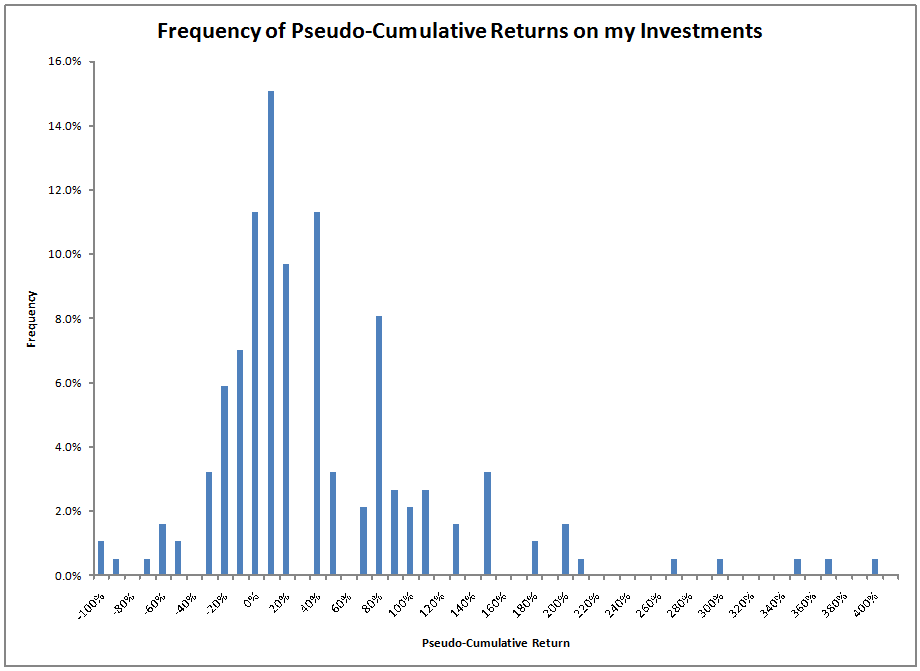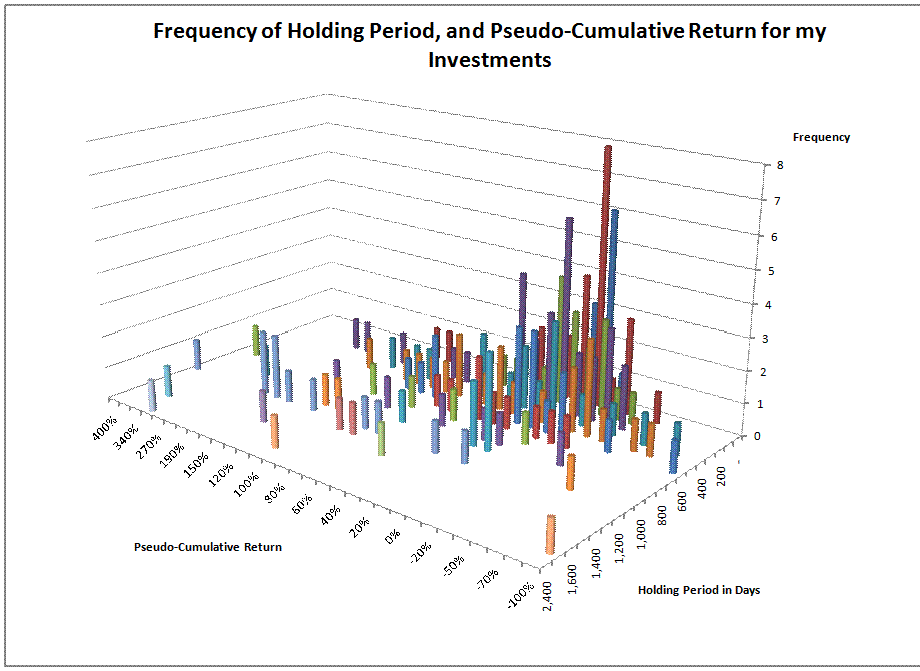Seven-Plus Years of Trading for the Broad Market Portfolio
If you ask me what is more fundamental to me — am I an economist or and an investor? I will tell you that I am an investor. At present for my work I am putting together a pitch book for my company detailing my value investing for potential clients. In the process of doing that, I decided to analyze all of my investments over the past 7+ years, in an effort to find some stories that are representative of my money management methods (both good and bad).
In order to get those stories, I had to download and clean all of my transactions over the past 7+ years, and then calculate the internal rate of return on each stock that I bought over the period. I still haven’t written the stories, and would appreciate advice from readers as to which stocks to use.
As I did my analysis, I learned a few things:
- Over the 7+ years, I have owned 186 stocks.
- Slightly more than 75% of my investments have been profitable.
- My average holding period has been 503 days.
- I have hit some home runs, and hit into triple plays.
- My top 11 gains pay for all of my losers.
- My cumulative profits comprise more than two-thirds of my assets.
Holding Period

Now, on this graph, the days are averages, so zero represents 0-50 days, 100 represents 50-150 days, etc. As you can see, I occasionally trade (though usually not intentionally) , but most of the time I invest.
Internal Rates of Return
What is an internal rate of return [IRR]? It is the constant rate one earns on an investment from start to finish. It is a way of averaging out all of the cash flows, and annualizing the result, so that it can be compared against other investments. Here is a histogram of the internal rates of return on my investments:

But, IRRs can be misleading. A small gain/loss in a short period of time can result in large absolute IRRs. That’s why I decided to create the imperfect concept of the pseudo-cumulative return. Suppose you earned the IRR over the full length of the investment? What would the cumulative return be?

Now, those who have followed me for a while know that my rebalancing discipline forces me to buy or sell after large moves. The pseudo-cumulative return usually overstates my return, because I sold on the way up, and bought on the way down.

The above graph, tough as it is to interpret, gives a reasonable idea of how my investments have worked. Most of my investments last for a few years, some more, some less. I have tended to make money pretty regularly, but I have had some real stinkers. I’ll pick up on that theme in my next post on Monday.

